20 Jul Import Plant Lists
This article is intended to help you take a list of plants you might have in Excel, Numbers, or from your CAD software and import these plant lists into PlantMaster.
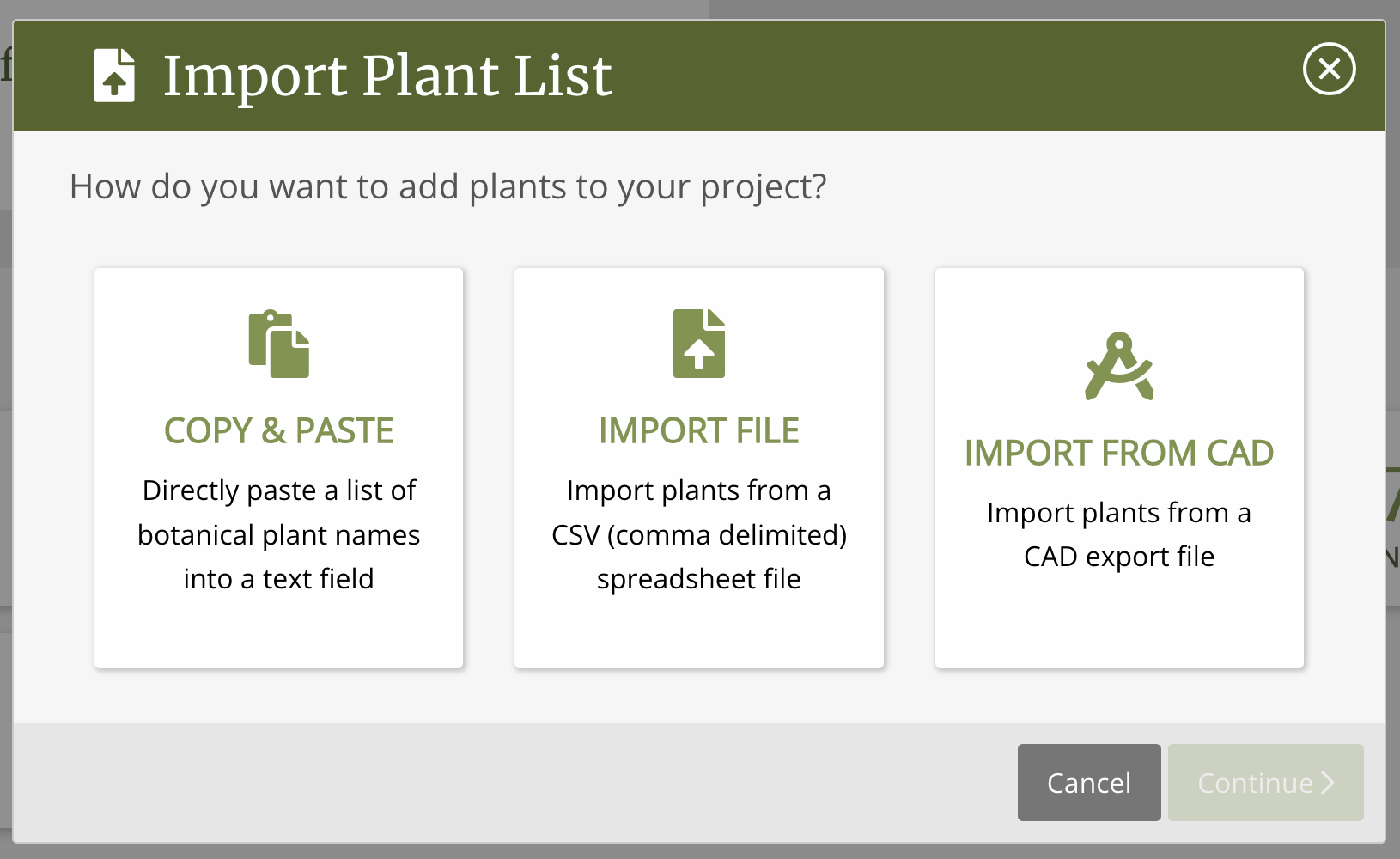
There are three ways you can import a plant list:
Copy/Paste the botanical names
Import from a .CSV file
Import from CAD file
When to use each option:
If you just want to get your plants into the PlantMaster project – use the Copy/Paste tool. It’s the easiest and fastest way to quick grab a list of plants and connect them to your PlantMaster account. As the name implies, you’ll simply open your spreadsheet and copy the column with the botanical names. Then you can paste that list right into the import tool.
If you want to make a legend for the project, or retain key information like quantities and sizes, then you need to use the Import from File tool. PlantMaster will store plant code, botanical name, common name, quantities, and container size. To use this tool, you will need to save your file as a .CSV file.
If you want to take your plants from your CAD system and add them to PlantMaster, we will cover this in a future article. As of this publication, we can import files directly from DynaScape and files converted to CSV from AutoCad and more. Stay tuned for more information.
Important Note:
PlantMaster is a plant database. To be able to run all kinds of unique searches and use the plants in all the reports and presentations – each plant HAS to exist in our database. Which means that part of this process is to make sure the plants from your list are matched to plant records in PlantMaster.
Any plants that we cannot match to existing records will not be automatically added.
Rather, they will be skipped. Don’t worry, there are easy ways to create plant records for the missing plants, but please note this tool will not create new plant records on the fly. We’ll give training to add your own plants at the end of this training – but we’re hoping you won’t need it for more that 1-2 plants :).
You can import this project information: botanical name, common name, quantity, container size, and plant code. This process will not work to override or update plant details like height/width, flower season, etc.
To update the plant details, you will need to do so in the plant record (ePlant) itself. For complete training on how to modify an ePlant or add your own plant, please read the article titled “Edit an ePlant” or “Add an ePlant”.
Import Plant Lists – Prepare your project.
First, you’ll need to open or start a project. Navigate to the “My Projects” page by clicking on “Manage My Projects” under “Projects” in the main menu.
This will bring you to the list of your projects. Here you can either select a project or create a new one.
If you’re starting a brand new project, click the “+ New Project” button in the left menu.
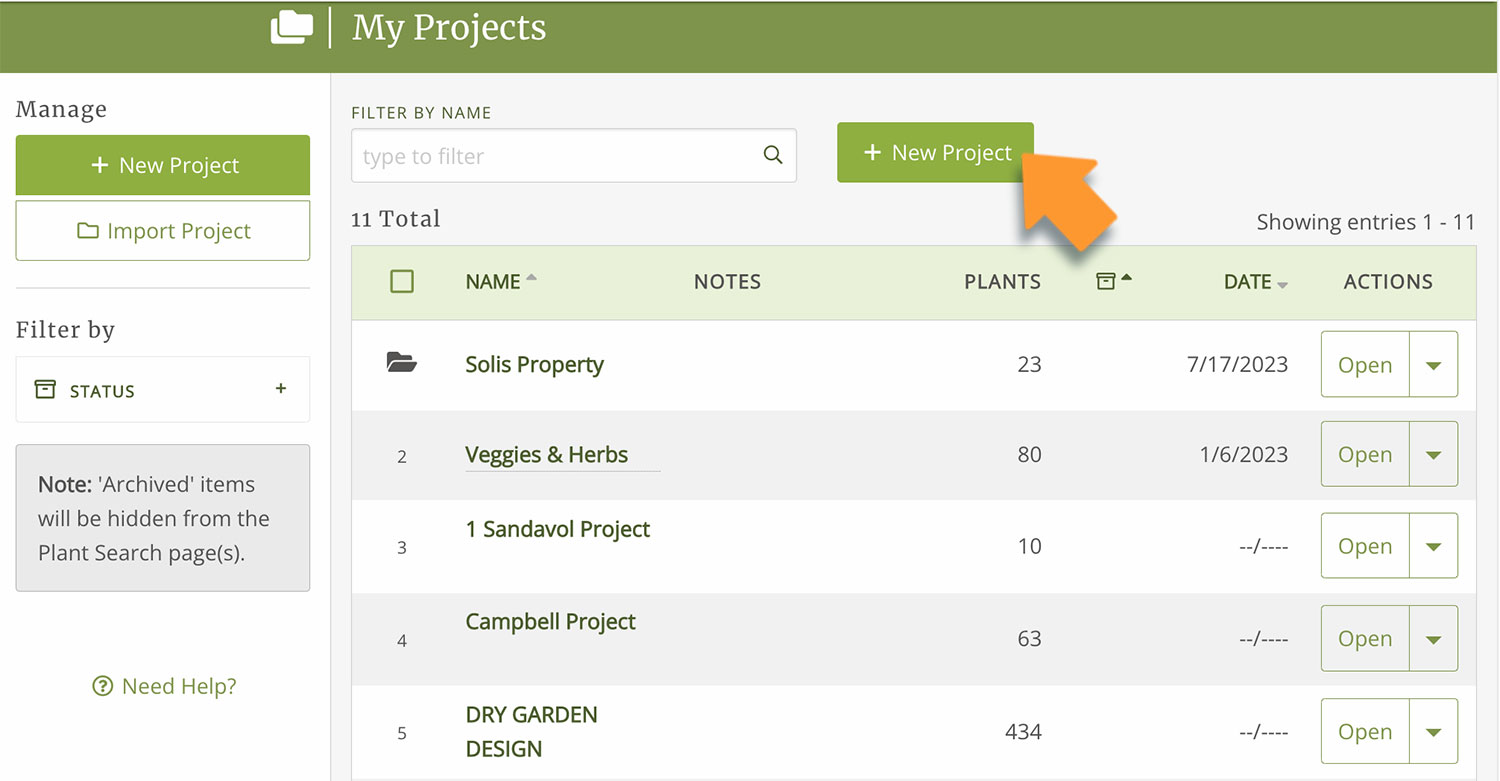
Then fill out the important project information and click “Continue”.
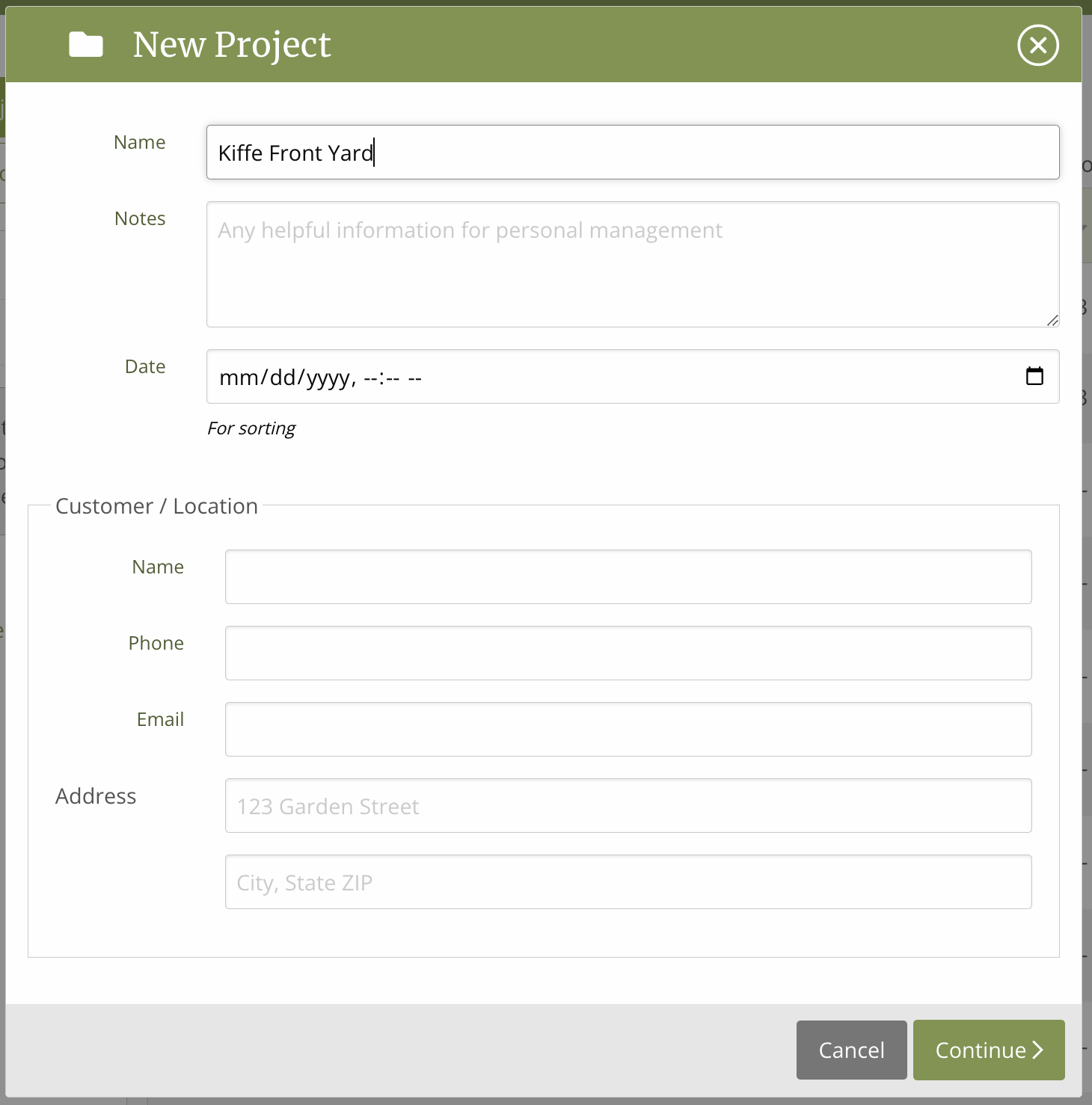
Once your project has been created, click the button titled “Import Plant List” from the options.
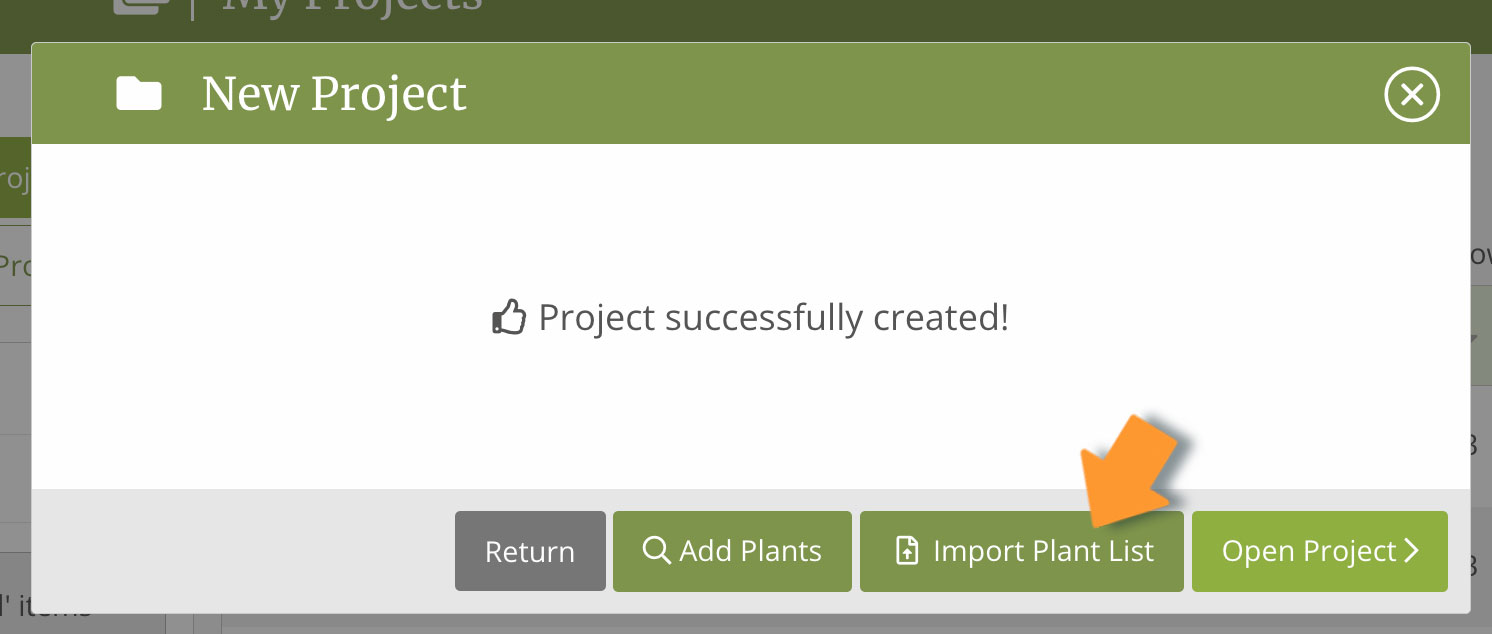
If you want to add plants to an existing project, simply click on the project name from the list to open the project.
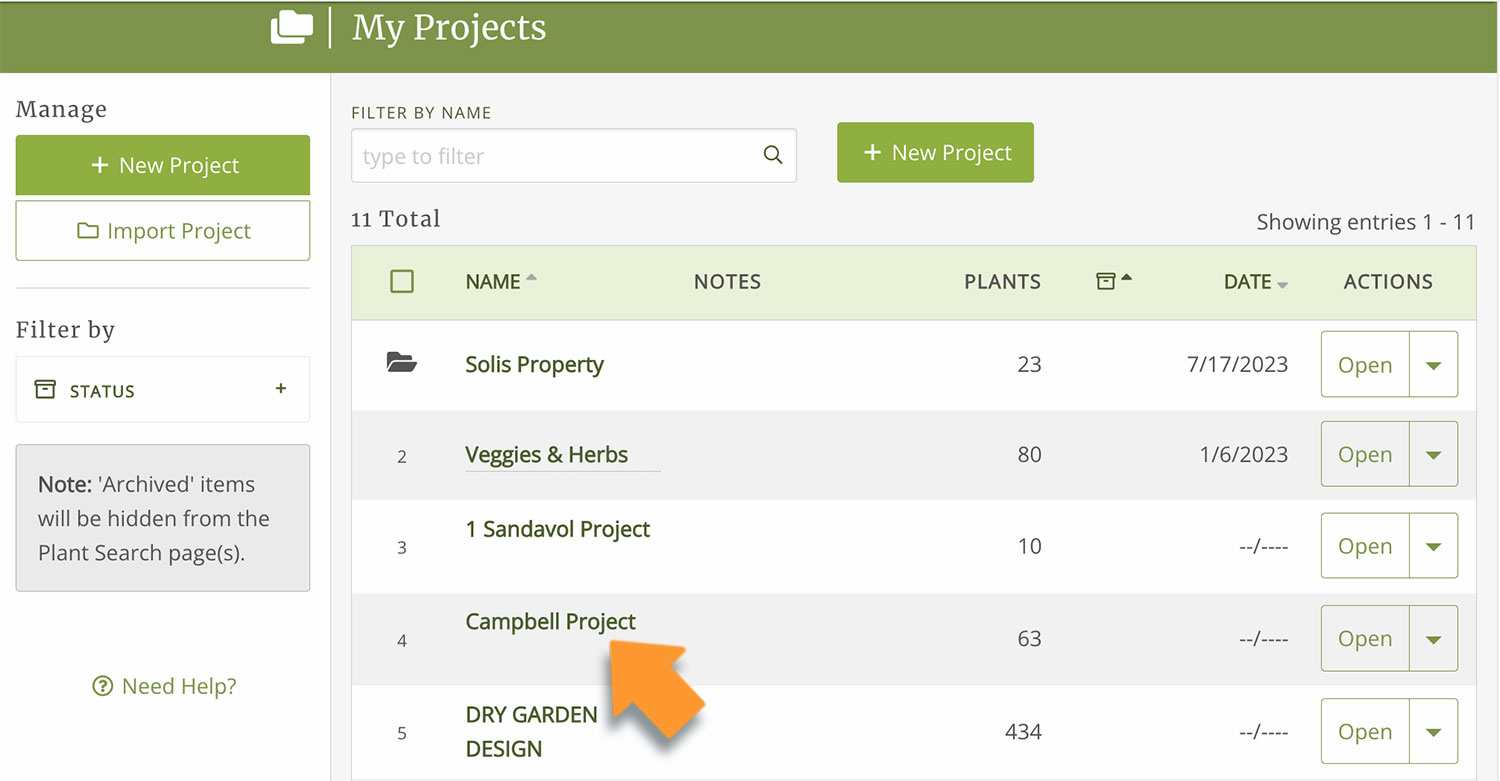
We’ve selected “Campbell Project” for this example. This will take you to the plants inside your project.
In the left side menu, click “Import Plant List”.
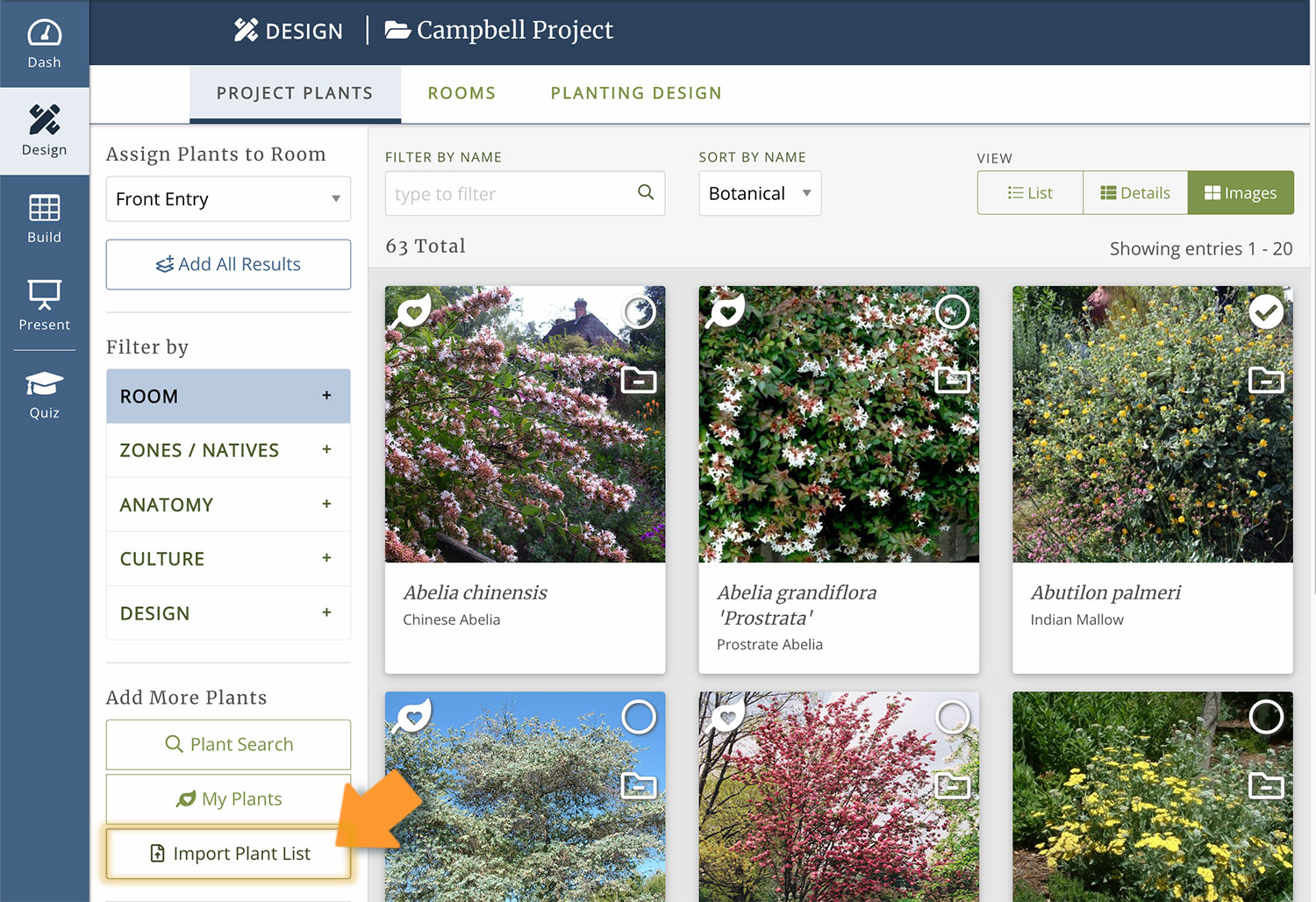
Both options will take you to the Import Plant List modal screen. It looks like this. Here you have several options. You can copy and paste the plant names, upload from a .CSV file, or import from your CAD system. For this training we’ll focus on the first two options.

Import Plant Lists – Copy/Paste the Botanical Names.
Click on “Copy/Paste from the two options. Now you’ll see the space where you can enter your plant names.
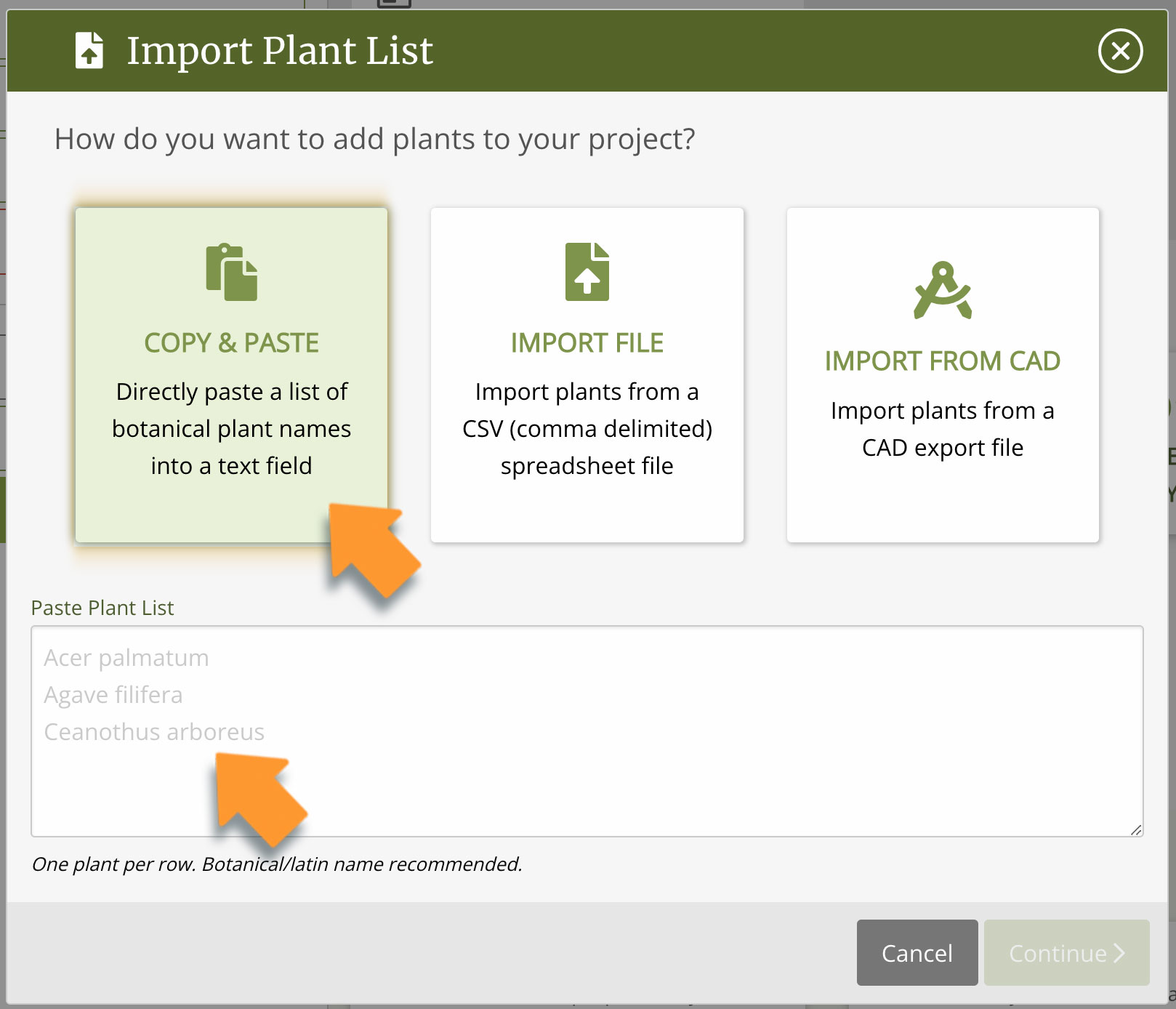
You can either type in the botanical names directly OR you can go to your spreadsheet and copy the entire column of botanical names. Please note: one plant name per row. If you have a long list separated by commas, this will not work.
Paste this list of names into the text space. Click continue.
For this example, we pasted names from a nursery plant list.

Now you’re ready to start matching the plants to ePlants in PlantMaster.
Please skip the next step (Import Plant Lists – Import from .CSV file) and go straight to the next section (Make Sure All Plants are Matched…)
Import Plant Lists – Import from .CSV File.
If you have a spreadsheet and you want to retain specific project information like plant code, container sizes, etc. Make sure to use this option.
Here is what you’ll need to do…
Take your Excel or Numbers file and open it up. You will need to save this file as a .CSV.
For Excel:
Open your Excel file.
Go to File > Save As.
In the window that pops up, select “.CSV (comma delimited file) from the File Format options.
Click “Save”.
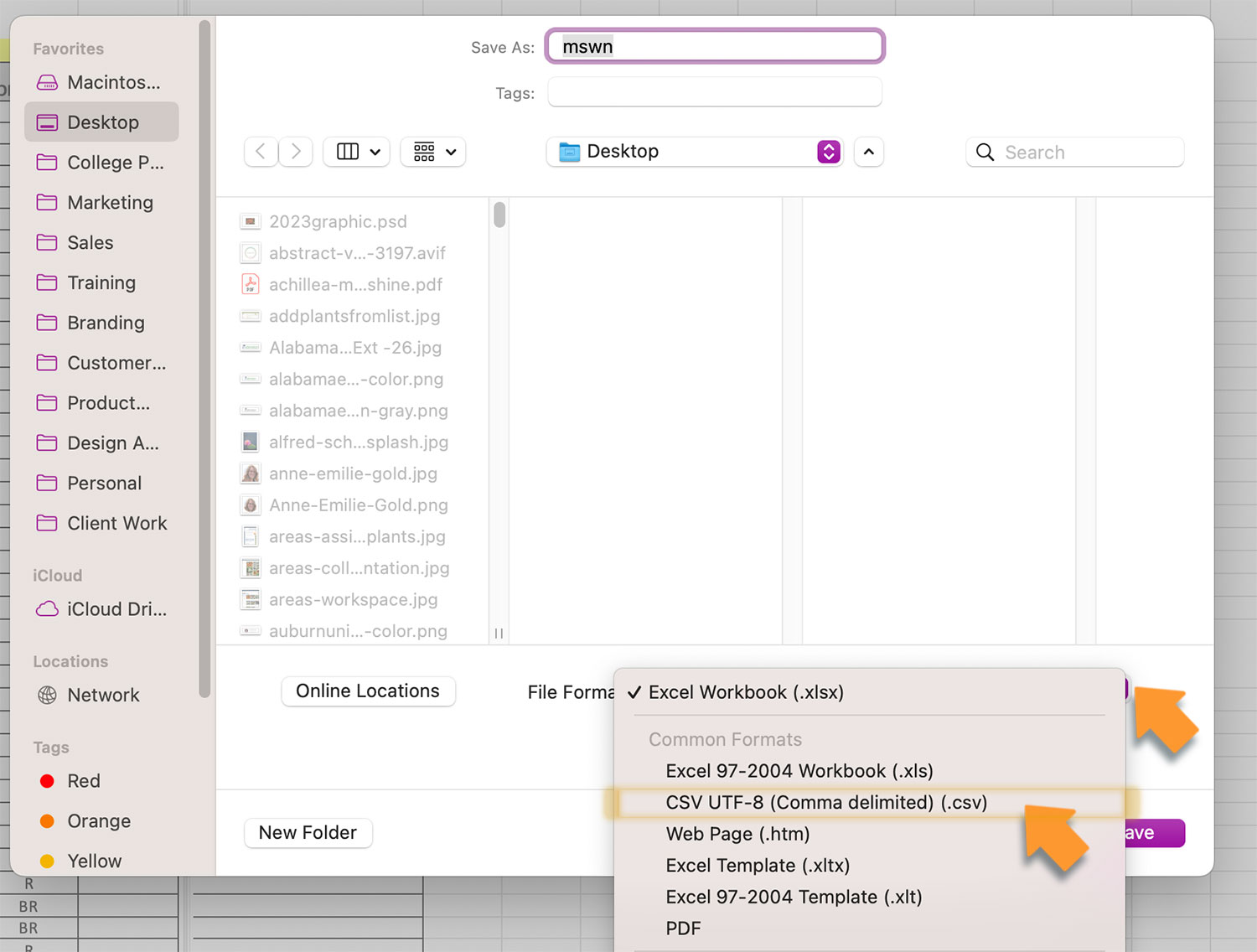
For Numbers:
Open your Numbers file.
Go to File > Export To.
Select “CSV” from the options.
Then click “Save”

If you have any trouble saving the file, you may need to copy all the information, open a new worksheet, and paste it in.
It also works best if the first row includes titles like Botanical name, common name, etc.
(Make sure to remove anything like your company name or contact information if its there – the software is just looking for plant names)
Save the CSV to your computer or device.
Back on the Import Plant Lists screen, select “Import from CSV”.
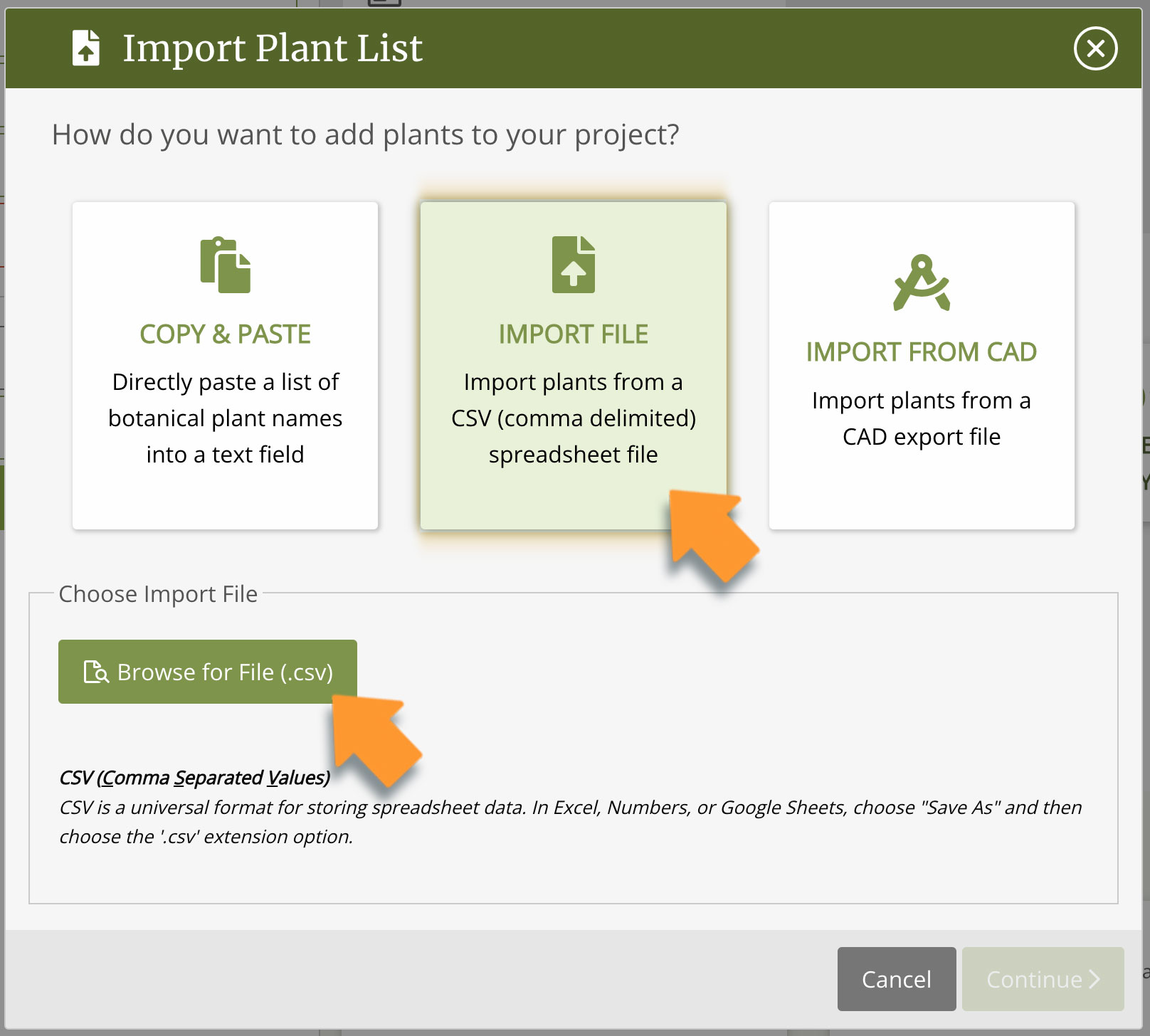
Below this button you will see a button called “Browse for File” where you can upload your file. Click the button and find your new .csv file.
Then click continue.
Now it’s time to make sure we get all your information.
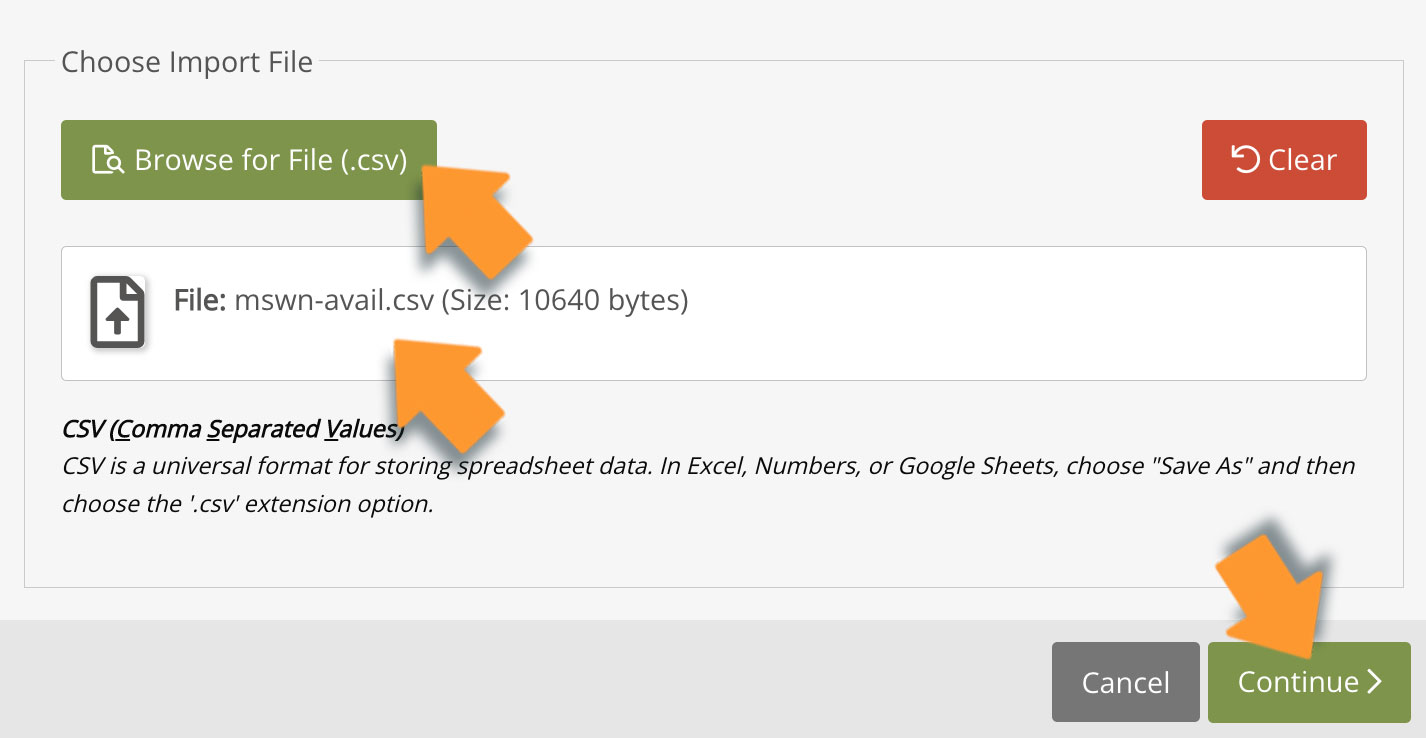
Match your columns to the correct information
Your spreadsheet likely includes a lot of information for each plant. And rather than make you spend time formatting your spreadsheet into a very specific layout, you can use this tool.
Here is what the columns look like. You’ll see the plant names and other information listed below headings that read “Un-Matched” or something else.
(If you don’t see the plant names on the screen, you will need to go back to your original spreadsheet. Save a new copy of the spreadsheet and delete anything at the top (like contact information or customer notes). That way all the plants are near the top.)
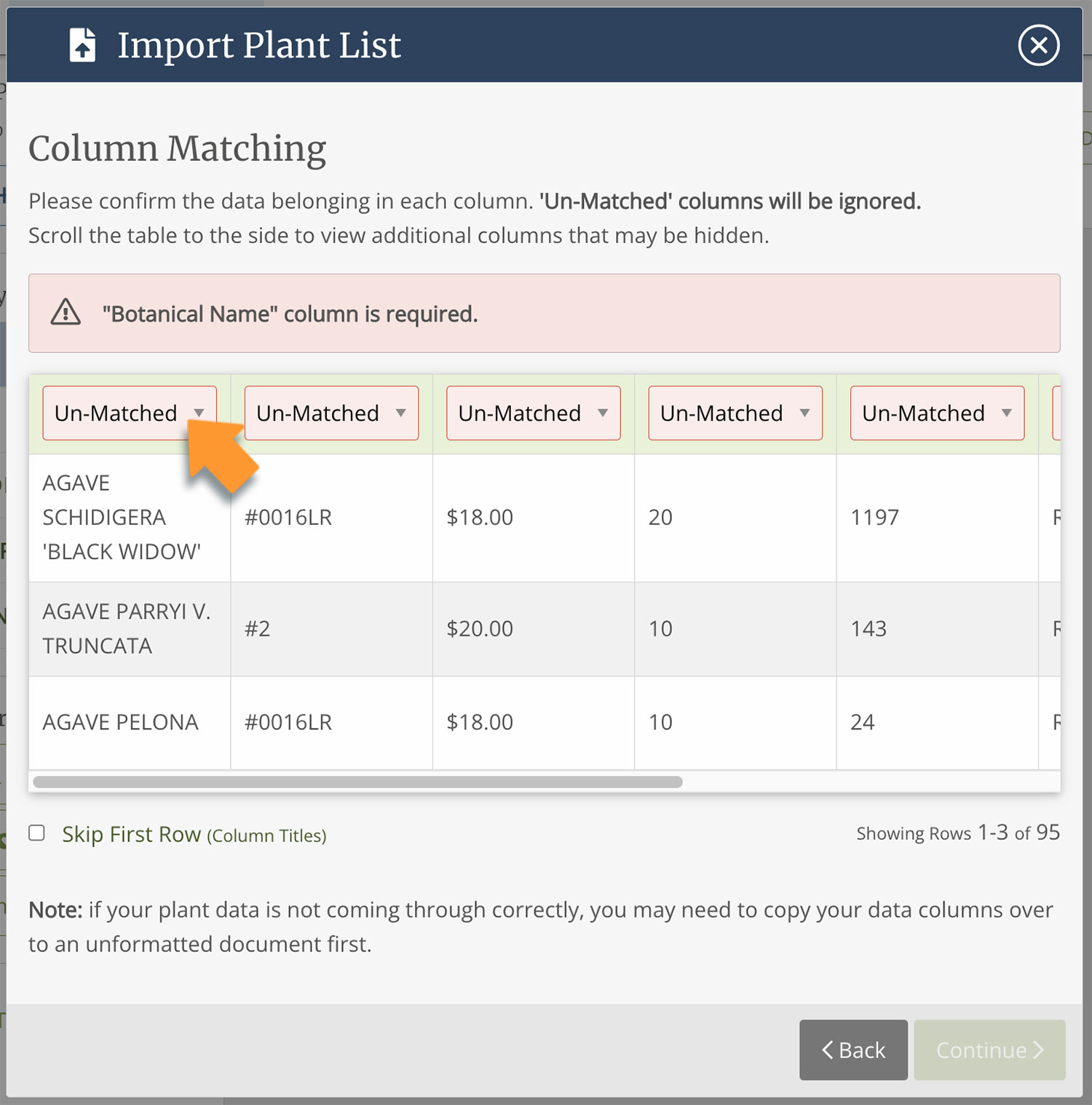
If you can see the plant names etc, you are ready to go!
First, find the column of your botanical names and make sure PlantMaster has correctly assigned that column. You can make a change by clicking on the drop down at the top.

Make sure you’ve correctly found your botanical name before you move on. It will look like this once you assign the column as “Botanical Name”.
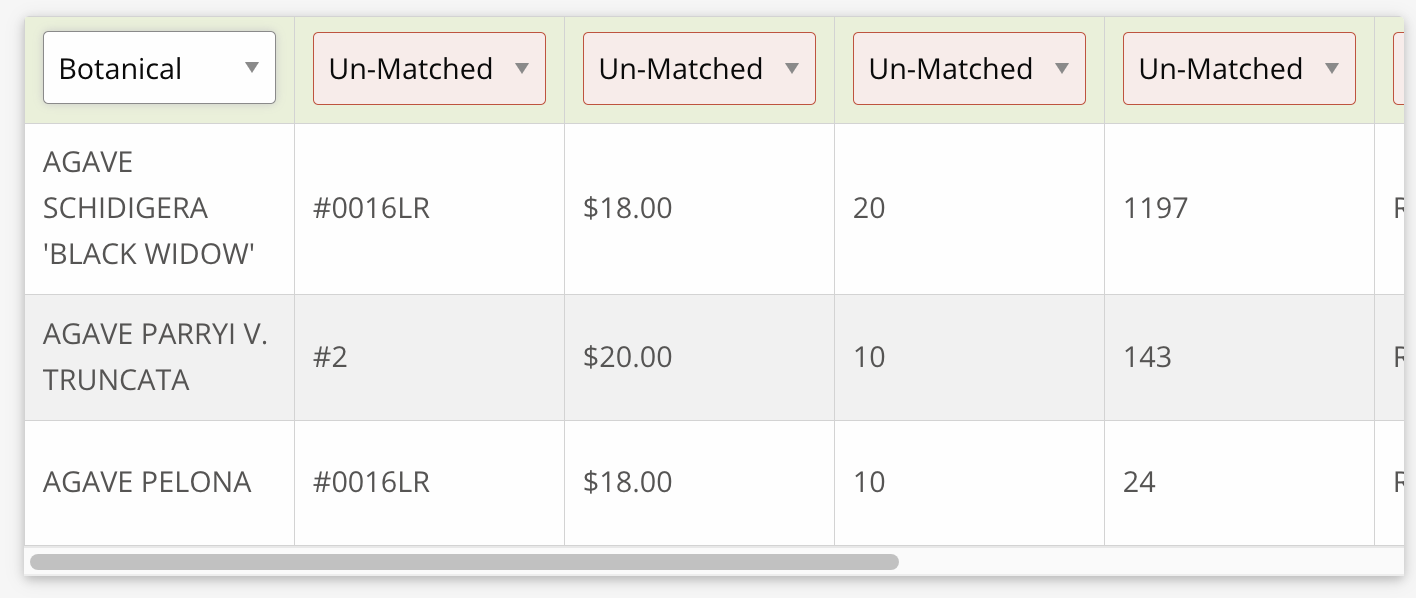
Now do the same for Plant Code, Common Name, Container Size, and Quantity.
(Please note, your plant details like height and width, bloom season, etc. will need to be changed inside the ePlant (plant record) and will not be adjusted as part of this process.) Any other data on your spreadsheet will be skipped.
Once you have all your legend data connected, click “Continue” – Now you’re ready for the last step – start matching the plants to ePlants in PlantMaster.
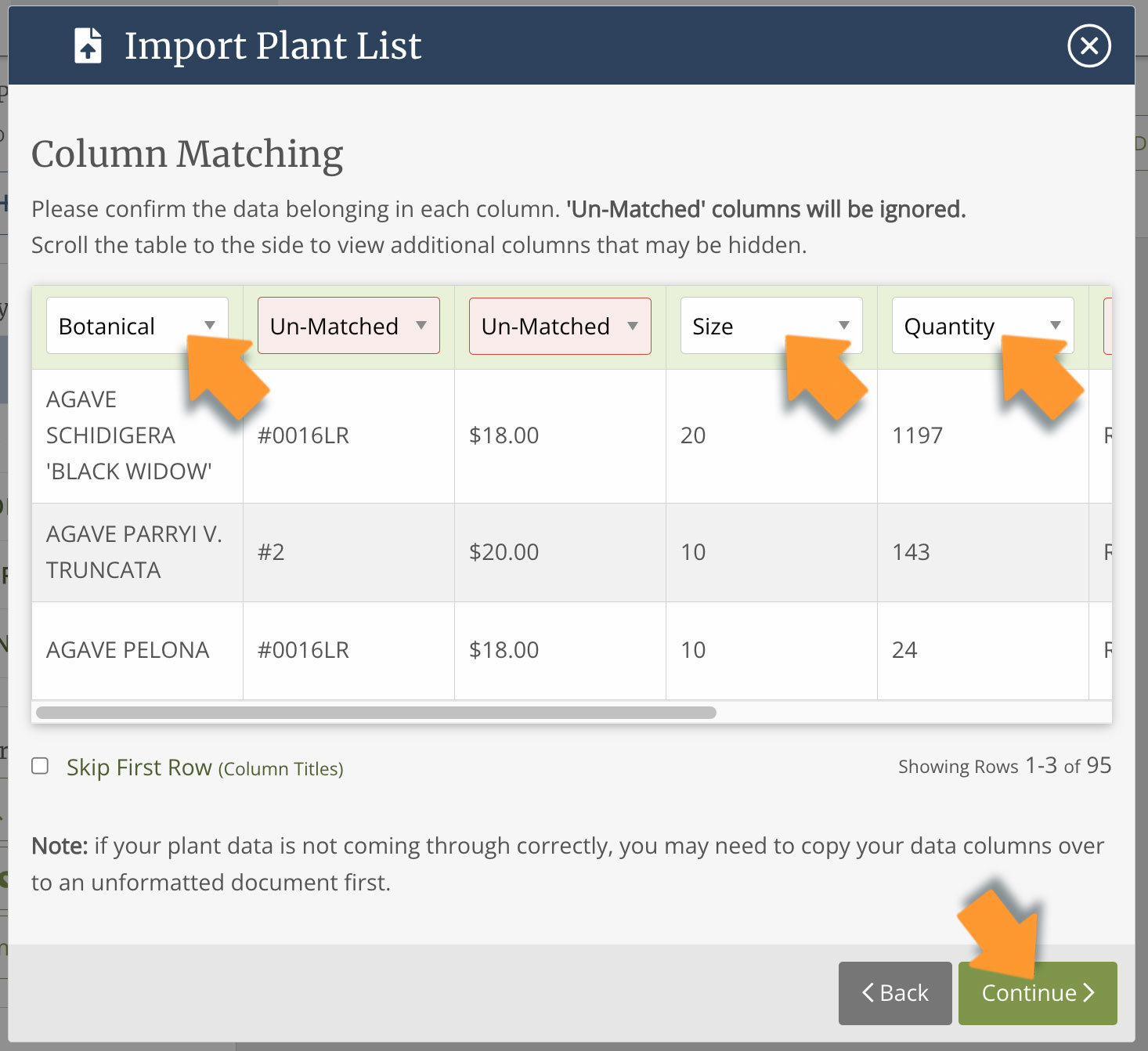
Import Plant Lists – Make sure all plants are matched to PlantMaster ePlants.
In this step, you need to make sure all your plants are matched up to plant records (ePlants) in PlantMaster. Any plants that are not matched will not be added, so its worth taking some extra time to make sure your plants are matched! This is what this screen looks like:
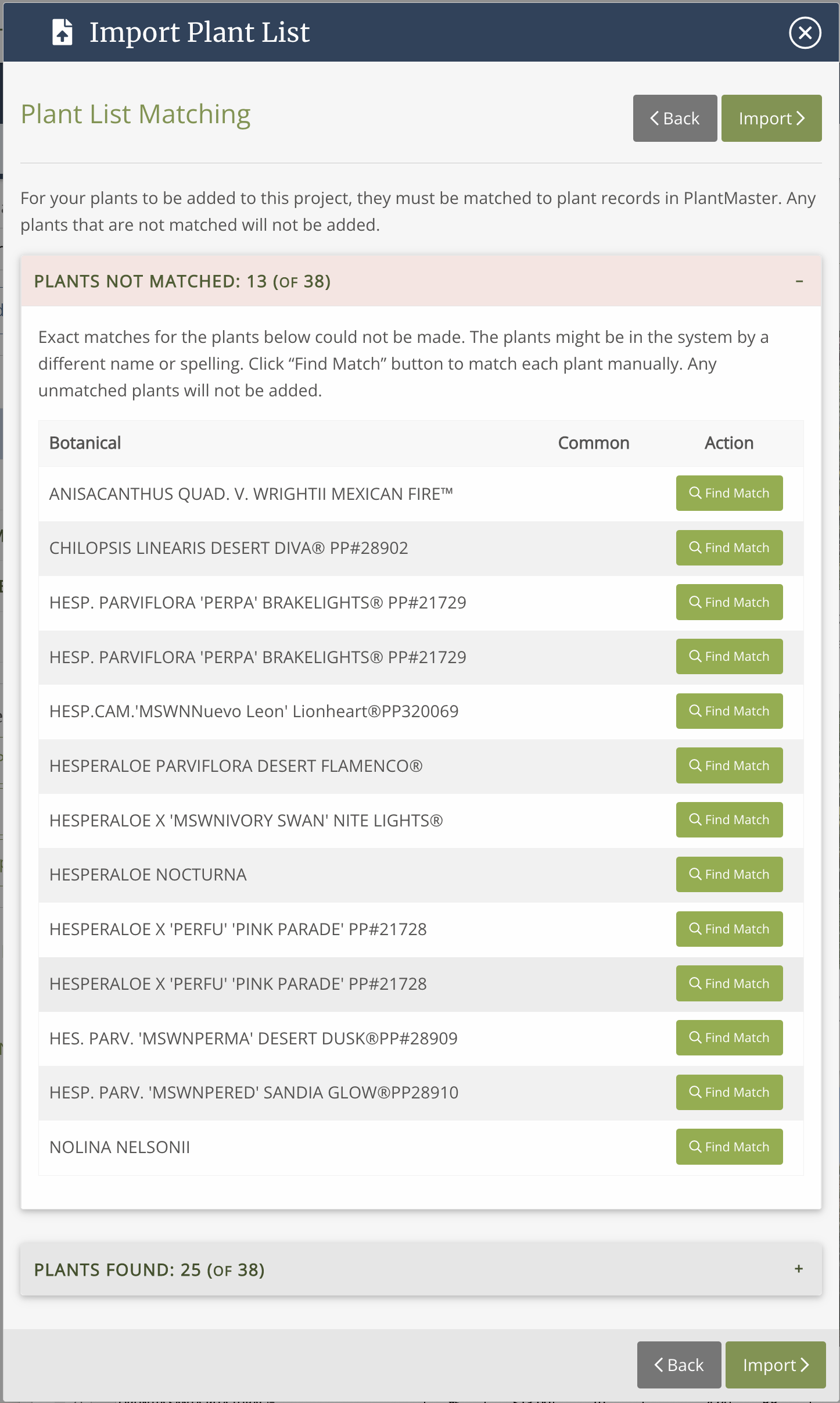
PlantMaster will try to make the matches automatically for you. But, remember that it IS software (and not a person) so it will only match plant names that are spelled EXACTLY the same. And we all know how many different ways there are to spell plant names!
The first section will be in red. This is all the plants that we did not find an exact match for.
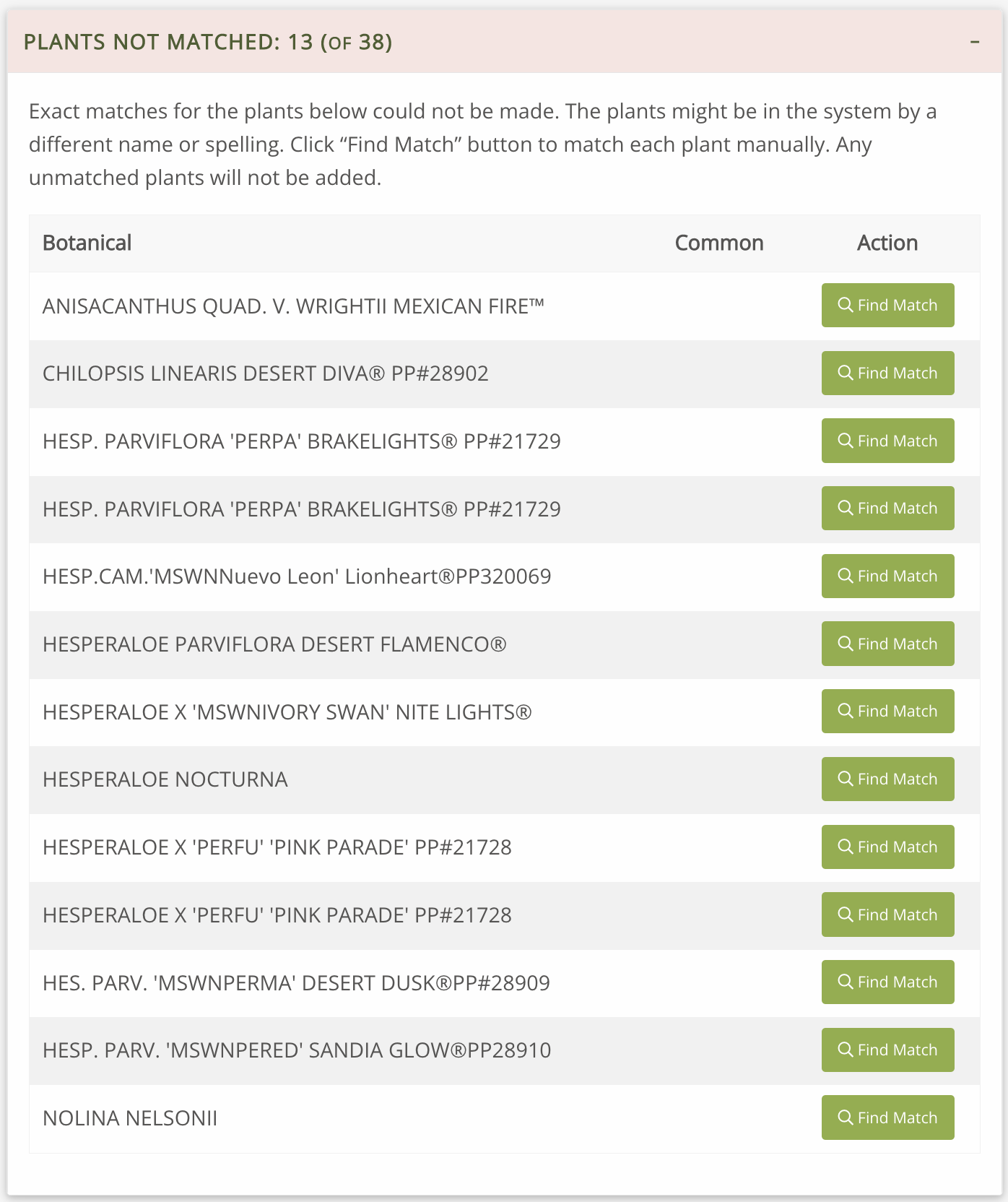
The second section is green. This is all the plants that were correctly matched to ePlants.
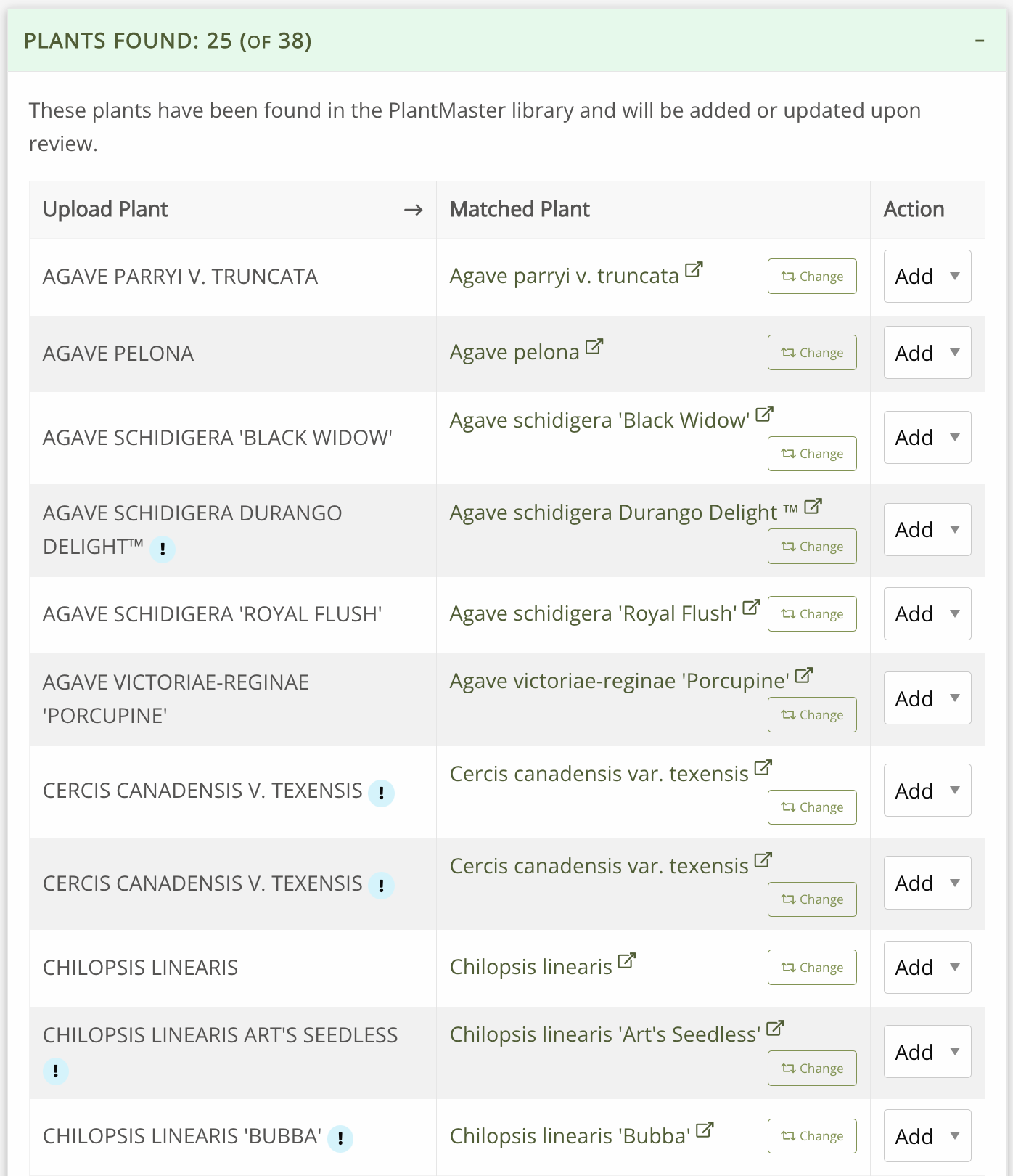
Double check matched plants.
We recommend that you take a quick look at the matched plants just to make sure everything looks right. You can always click the “Change” button if you want to match your plant to a different plant than the one selected.
The blue exclamation mark means the names didn’t match exactly – so please double check that the right plant is selected.
You can click on the plant names to see the full ePlant – that way you can make sure you’ve got the right plant.

Manually match your un-matched plants.
Next, head back to the red section of UnMatched plants – this is where you’ll need to do a little work to manually match your plants.

The first plant in our example is “Anisacanthus Quad. V. Wrightii Mexican Fire”.
Click the “Find Match” button to the right of the plant name.

This will pull up the plant search. Here is what it will look like:

Tips and Tricks to find your plants.
If you don’t see the plant name – don’t give up yet! There are so many different spellings of each plant name and the system just hasn’t found the EXACT match. PlantMaster will search through botanical name, synonymous names, and common names. So give these tips a try!
Don’t type the entire plant name in the search bar. Try typing 4-5 letters and use the list to find your plants.
Or, click on the green buttons below the name. Try clicking on the various parts of the plant name to see if we have your plant.
In the example above, try searching by what is most unique in the name. Try “wrightii” or “quad”
Lastly, if you know the common name, try typing part of the name.
Once you’ve found this plant, click “Select” and it will be connected to the ePlant. You will see the plant disappear from the Un-Matched list.
Repeat this process for every plant in your list.
At the end of this process you will get a file with all the plants that were not matched so you’ll know exactly what plants to add. (We don’t have a way to automatically create a new plant, yet – so you’ll need to create those plant records in another step.)
Once everything looks great and your plants have been matched, click “Import”.
This will bring in the plants you have matched. (Hopefully we had most of your plants!)
Here is what you will see:
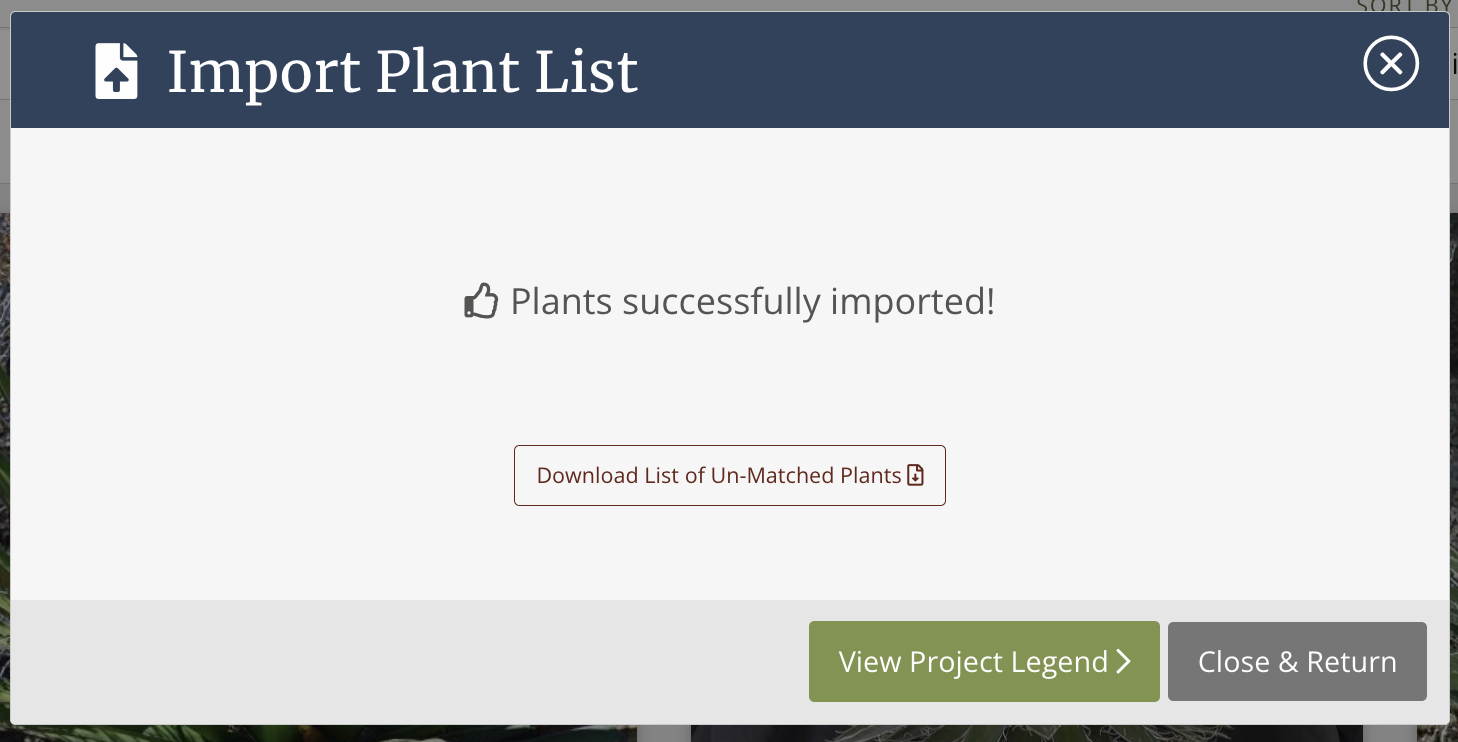
These plants are all now part of your current project and can be used in any future projects.
You’ve also brought in key information for this specific project like container sizes, quantities, etc so you can jump right to creating a plant legend.
Now when you go to the design section of your project, you will see all the plants you’ve added.
That’s it! You’ve added plants from a list!
If there are plants that were not added, make sure to click the button called “Download List of Un-Matched Plants”. This will give a file of the plants that were not added for your reference.

You can easily add these plants to PlantMaster. Please read the article titled Add an ePlant to follow step by step instructions on how to add any plants that weren’t automatically added.


